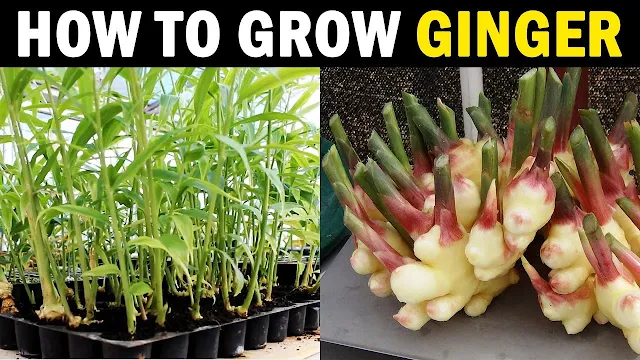The ginger farming business is very profitable to Indian farmers. It is an indigenous plant and an essential spice crop of the world. Moreover, it has value in medicine as a stimulant and carminative of the gastrointestinal tract. We can use dry ginger for manufacturing the oil, essence, oleoresin, soft drink, vitamins effervescent soft drinks, and non-alcoholic beverages. India is an enormous ginger exporter to more than 50 countries. So, this farming contributes a wide part to the Indian economy.
Zingiber officinale L is the botanical name of the ginger crop and belongs to the Zingiberaceae family. Let’s know more about the ginger farming business.
Climate and Soil
Farmers can grow ginger best in warm and humid climates. It is mainly growing at any condition rainfed and irrigated in the tropics from sea level to 1500m. It can be more successful if a typical rainfall at the sowing time, during growing periods, must be heavy and well-distributed and dry weather (temperature of 28° to 35°C) for about a month before harvesting. During all the processes the high humidity is needed for ginger farming. It grows best in well-drained soils like clay & sandy loam, red loam, or lateritic loam. It is an exhaustive crop, so the soil must be rich in fertility.
Varieties
Farmers grow several ginger varieties in different places in India. They generally named it according to the locality. Let’s know about some of them: Maran (Assam) and Ernad, Kuruppampadi, and Wynad local (Kerala). Rio-de-Janeiro is very famous for its high production rates among the farmers. The yield potential of this variety is 25 to 35 tonnes per hectare. Let’s move to know about some improved types from High Altitude Research Station, Pottangi (Orissa).
- Suprabha
- Surari
- Suruchi
Planting Season
The first fortnight of May is the best time for planting ginger at west reasons of India with the receipt of pre-monsoon showers. In contrast, April is the correct month for the cultivation of ginger in North-Eastern states. It can be planted during the middle of February or early March under irrigated conditions.
Preparation of Land
The land preparation starts for the cultivation of ginger from the early summer showers. First, farmers must plough the land up to 5 times or dig to make the fine soil tilth. Then, they have to remove weed from the roots so that the land can be free from the weed. This work can be time-consuming, so farmers can use excellent tractors like Swaraj 735 XT and others.
Planting
Farmers always propagate ginger by the portion of the rhizomes, which is known as seed rhizomes. First, farmers cut the preserved seed rhizomes into small pieces of 2.5 – 5.0 cm in length. The seed rates vary from 1500 to 1800 kg per hectare from place to place.
Manures and Fertilisers
25-30 tonnes per hectare decomposed manure or compost along with 2 tonnes of neem cake is to be spread at the time of planting. Farmers can use this manure during the planting or broadcast over the beds before planting.
Mulching
Mulching the beds with green leaves is an essential operation for ginger farming. In place of a source of organic manure, it prevents the washing of soil, smothers weed growth, conserves soil moisture, and improves the physical properties of the soil. Farmers can do the first mulching at the time of planting (12.5 tonnes of green leaves). The second is given after the 40th day and 90th day (5 tonnes of green leaves) per hectare immediately after supplication of fertilizer and weeding. Farmers can do mulching operations with the help of tractors, which can give good mileage and excellent working efficiencies like Swaraj 744XT and others.
Harvesting and Curing
From the 6th month onward, farmers do harvesting for marketing the green ginger. The rhizomes are washed in water two or three times to remove dirt and soil and sun-dried for a day. To get the dry ginger, farmers do harvesting from 245 to 260 days.
For preparing dry ginger, farmers keep the produce soaked in the water overnight. Then they rub rhizomes well to clean them. Next, they remove the rhizomes from the water and remove the skin with the help of bamboo splinters. Finally, they keep the rhizomes and dry them in the sun uniformly for one week.
Now they rub the dry rhizomes together so the last layer of skin and dirt can be removed. Finally, farmers soak peeled rhizomes in 2% limewater for 6 hours to get a good appearance. The yield of dry ginger is about 16-25% of fresh ginger, which depends on the variety and location.
To get more about farming, spice farming, and
farm machines, stay tuned with us. We will come with new and updated
information in our next blog.











0 Comments